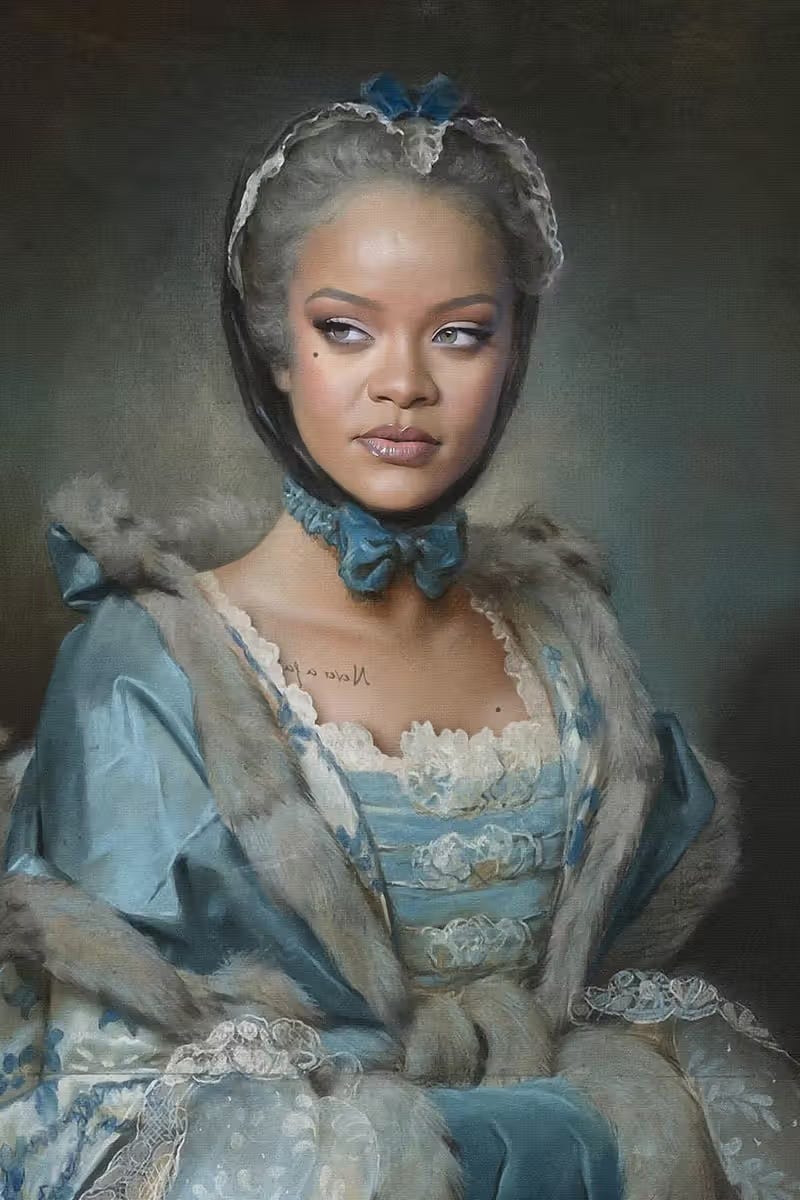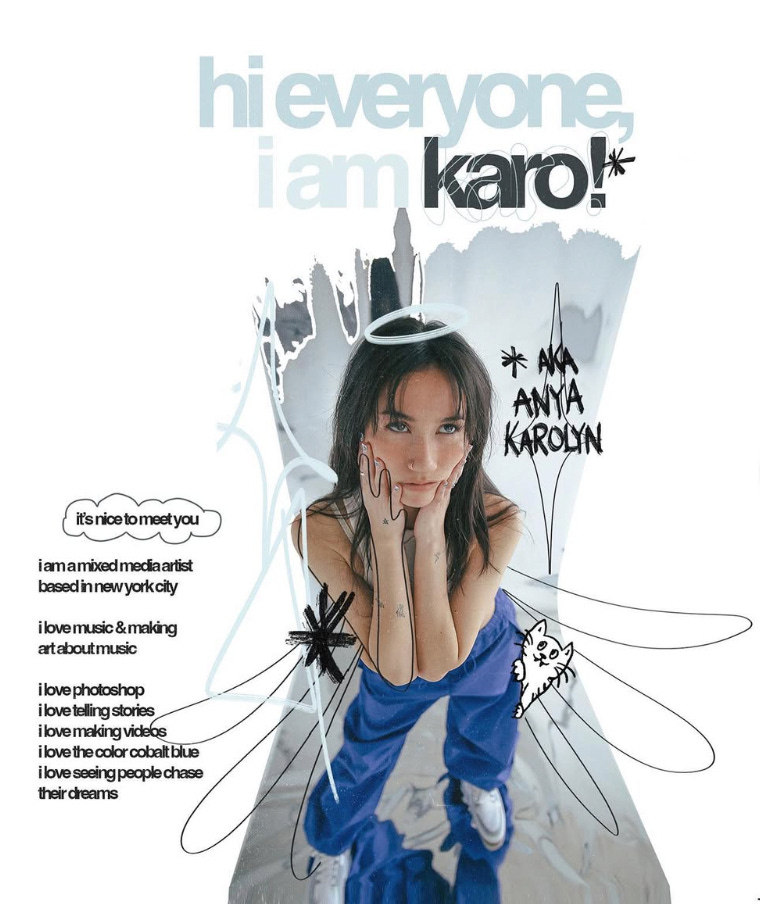Are we content?
Social media and the commodification of art
👋 Hello! We’re The Z Link, a global Gen Z-led social media agency that helps brands connect with our generation. The Digital Native deconstructs the best campaigns in the Gen Z social media marketing world, so you can be the most informed marketing baddie in the office. For any feedback, questions or suggestions, just reply to this email!
Looking for a social media strategist? Book a free call with our team anytime. 😙
I’d like everyone to pause and appreciate the wordplay in the title of this newsletter. Thank you, thank you; you can stop with the applause now. 🫷🏼🙂↕️🫸🏼 But no, seriously, this is something I’ve been grappling with, and I know a lot of my creative friends struggle with, too. So let’s talk about it.
Hasn’t art always been a commodity?
Art history nerd here says no (I had it as a subject for one semester as an undergrad). Do you think cavepeople were selling their stick figures? No. They were drawing for the vibes of it, and honestly, I wish we could go back to that. The first recorded instance of art being sold for profit was in ancient Greece, and this is why I love the Greeks; they’re always doing everything first, such trendsetters.
Moving on, however, it wasn’t until the medieval and Renaissance periods that we’d see the commissioning of artists, and even then, it’d be firsthand. Secondhand art being sold didn’t occur until the 16th century, but we’re focused on the sale of firsthand art today.
So, eventually, you know, the rich started commissioning artists, but even then, it wasn’t as big of a commodity, but more so something the rich used as a status symbol. Something completely different from today. Obviously, even today, art is a status symbol in the sense of who can make it and who can collect antiques. Of course, when I mention ‘who can make art’, there is that fine print that states ‘free of worry’. What I mean by that is only the rich can truly afford to be artists today because they don’t have to worry about making rent, which is why most people have commodified their craft.
And again, for added nuance, not everyone was forced to monetise their creativity, but some people genuinely have always wanted to make money off it — it’s no different than a child growing up their entire childhood wanting to be a director. And with the upcoming generations, and even ours, growing up with social media, aspirations have slightly been skewed to favour social media popularity.
What role does social media play?
I think all the past decades of demeaning creative work, even though it’s EVERYWHERE, has done irreparable damage to the financial state of the creative community. Institutions have been pouring fewer resources into the arts, so now social media is the only way for people to support themselves while doing what they love. Even then it’s such a big gamble because will you make it or will you not? So again, points back to when I said that rich people have it easier when it comes to doing the arts as a career. Because not only do you not have to worry about bills, their privilege and connection will get them places most of us could only dream of.
Of course, let’s not forget the hustle and grind culture that forces people to turn their creative hobbies into a side hustle, which ends up taking the joy out of creating. I see this attitude changing now, where people are starting to normalise (again) doing hobbies for their souls instead of for monetary gains.
And the only reason why hustle and grind culture had such a huge impact is due to the rise of influencers and their lifestyle, which centres freedom but often fails to acknowledge the oversaturation in that ‘career path’ and how much luck can play into going viral to a point where this can become your full-time job. That’s when you distinguish between an influencer and a creator.
Distinguishing between an influencer and a creator
Let’s get one thing clear: everyone who creates content is lumped as an influencer, which is wildly inaccurate, and I’m not the only one who thinks this. Grin, a creator management platform, makes this distinction easier to understand by saying the key difference between the two is the purpose. “The ultimate goal of creators is to connect and engage people with similar goals, values, and lifestyles. While influencers do those things, they also prioritize their brand partnerships and leverage online communities to guide more informed buying decisions,” says Quinn Schwartz in an article for Grin. So essentially, an influencer’s sole job is to act as a walking advertisement, to INFLUENCE you to buy things, versus a creator who creates content and mayyyybe influences you to buy something. The way I distinguish between the two is very simple—not every influencer is a creator, but every creator has influence.
A creator is more likely to be documenting their craft or their purpose AND ALSO far more likely to be more authentic with their content approach. But an influencer? Most likely to just… show off the material wealth.
When I think of CREATORS, I think @karocrafts or Ashley, aka BestDressed. I’d consider Emma Chamberlain the outlier influencer who feels more like a creator (in my very humble opinion). But when I think INFLUENCER? Alix Earle off the top of my head, and of course, I can’t forget the Kardashians, the influencer template.
Why is this distinction important?
Distinguishing between the creators and the influence is important because it'll dictate how happy you'll be consuming. An influencer will sell you a fantasy, and a creator will give you the raw and authentic behind-the-scenes of the not-so-glamorous parts of being a creative/creator. Seeing the fantasy will make you feel inadequate; I know it's made me feel that way, but anytime I've come across a creator's content, I've felt seen, heard and understood.
And let's not forget the godforsaken courses. Every other influencer is selling an overpriced course full of information that a simple Google search would give you. FOR FREE. What's even more dangerous is the fact that most courses are on things that they may not have the best knowledge of because only profits matter to them, and they ONLY want to sell you a lifestyle. Buy their course = have their lifestyle. The template for this is definitely Dan Bilzerian.
Conclusion
So, what’s the conclusion? Yes, we’re content. Especially creators who have to monetise something as pure as their art to survive. Does that lead to contentment? Varies from individual to individual. I do think we should support creators and creatives more because we won’t see a change in attitude unless the wind shifts in our favour, which is again only possible through the audience. Now again, we’ve established that audiences for creators and influencers are different, but ask yourself, does it cost a lot to support an artist?
Thanks for reading! Stay tuned for the next issue covering latest marketing campaigns and strategies winning over Gen Z. Any questions/suggestions as to what we should cover next? Reach out to us and we’re always here to chat!
— Brought to you by Shaurya, Trends Reporter at The Z Link









Feeling v content w this content
Love! Just did my first article on heartbreak
https://open.substack.com/pub/afwl12177427/p/consumed-by-love-shattered-by-lies?r=5fh6yr&utm_medium=ios&utm_source=post_stats